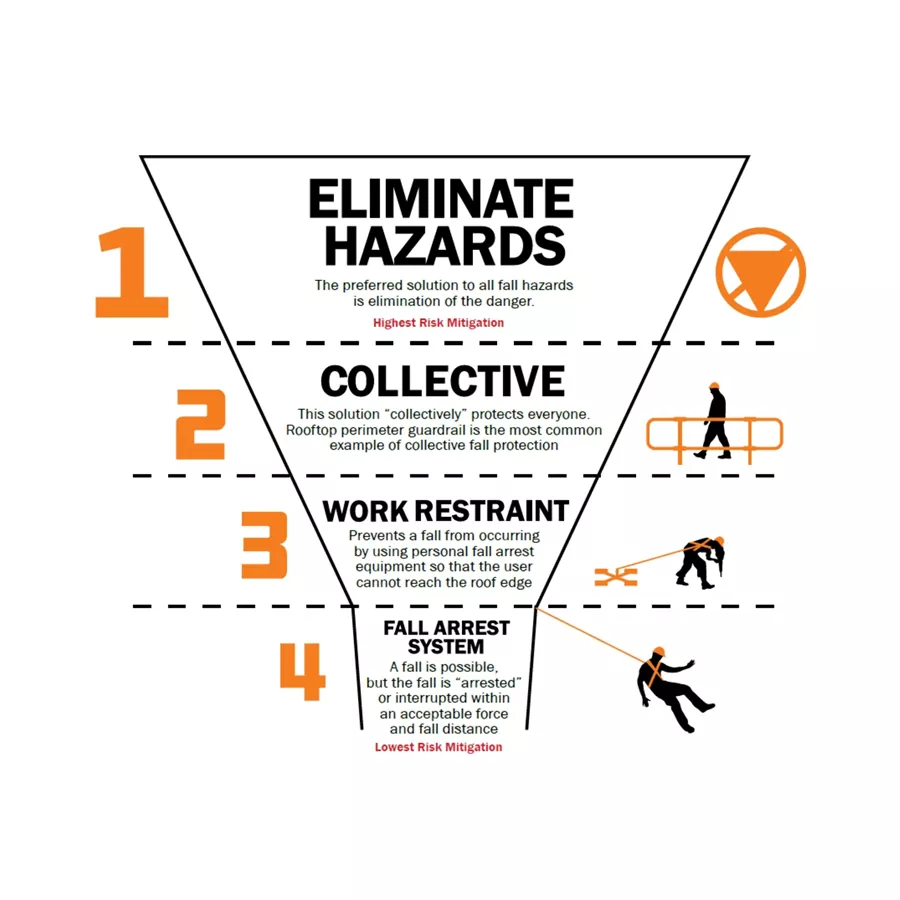
You are visiting the Canada Kee Safety website from United States. Would you like to go to the United States site?

"You say tomato. I say tomahtoe. You like potato. I like potahtoe…”
Fall restraint. Fall arrest. The two are often confused—and there are similarities—but they are not the same. Generally, it is a matter of fall prevention vs. fall protection. Yet, those terms apply to a range of safety systems and products. The differences between fall restraint and fall arrest are specific and critical to employers looking to protect their employees working at height.
Fall restraint prevents a worker from reaching a fall hazard or falling any distance. Whether using a horizontal lifeline or a tie-off system (harness, lanyard, rope) with a permanent anchor, a fall restraint system may allow a worker to reach the roof edge but not fall over the edge.
In fall restraint, the worker can act continuously within the span of the lifeline system or the radius from an anchor point. If an employee trips on a working surface, such as a pipe on a rooftop, there is less potential for a serious injury. Falling from the roof, however, can be deadly. (Thus, for maximum safety, a perimeter guardrail system should also be in place.)

Fall arrest does not prevent a worker from falling from a height; it stops the descent and keeps the worker from hitting the ground or a lower-level, intermediate surface below. Fall arrest should only be considered if fall restraint is not possible or practical, such as:
Compared to fall restraint, fall arrest allows more area to be covered; however, it is still a tie-off system that needs an anchorage. So that workers may access roof edge, a mobile anchor device helps provide the necessary fall protection.
Fall arrest also poses a greater risk of severe injury and requires a rescue plan to minimize suspension trauma.
Although distinctly different, fall restraint and fall arrest are both active forms of fall protection. The worker is actively involved instead of relying on a passive system—like a guardrail—already in place.
Both fall restraint and fall arrest are tie-off systems that use a harness, lanyard, rope, or a similar lifeline system. To this end, the tie-off system must be custom-fitted for each worker, be inspected before and after every use, and include worker training to use the system correctly and safely.
A rigid rail travel restraint system is also a safety device that can be used for either fall restraint or fall arrest. A rail track assembly is mounted from above, and a worker furnished with tie-off equipment travels along the work area using a trolly attached to the rail track and the lifeline.
A rigid rail system is ideal for working at height indoors, including overhead for aircraft and other vehicle maintenance and repair. The difference is that the worker cannot reach the leading edge with fall restraint, but with fall arrest, the worker can fall over an edge and must be rescued.

A truly comprehensive rooftop solution follows the Hierarchy of Fall Protection. An expert starts by inspecting the roof site for potential fall hazards. From there, a complete system solution and recommendations are created that descend down the four levels of the hierarchy, from simple, sensible approaches for eliminating risks all the way down to lifesaving personal protection systems.
Collective Systems require no additional training to use. Fall Restraint and Fall Arrest Systems both require a high level of user competency, training and additional inspection to be used properly.